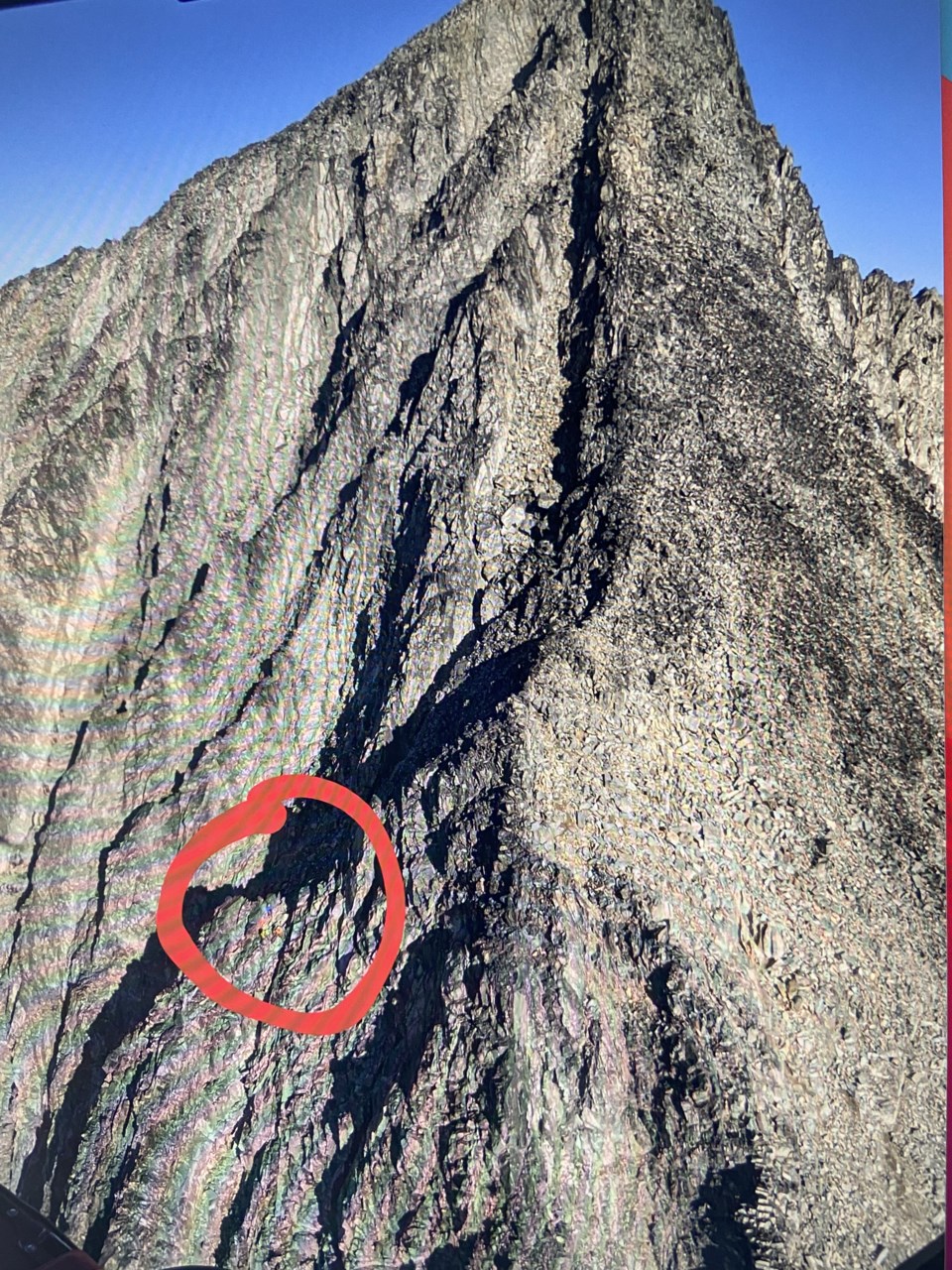A pair of hikers were extracted from Mount Weart Monday morning, Sept. 13 after being caught on a cliff in a cloud bank and stranded overnight, according to Whistler Search and Rescue (WSAR).
The Lower Mainland man and woman in their 20s had ventured to the triple-summit mountain in northwestern Garibaldi Provincial Park on Sunday “after seeing on Instagram that the Armchair Traverse had gained some popularity,” explained WSAR manager Brad Sills. “It’s described as relatively easy but they didn’t realize just how loose the rock is around here and … they got caught in bad weather and couldn’t read the ridge properly.”
After trying to descend to Wedgemount Lake through a cloud bank, the couple “ended up cliffed out,” Sills said. “They could hear falling rock all around them. Not a good position to find oneself in.”
The couple called WSAR late Monday afternoon but were advised to wait out the night before crews were able to long-line them off the mountain the following morning. Sills said the hikers had packed light, and weren’t necessarily prepared to spend the night.
“It was a classic mountaineering incident. No real fault, just the learning curve in mountaineering is steep, hence the terrain,” he added. “We’re just so happy it didn’t end in tragedy because the terrain was certainly conducive to that.”
Sills noted it’s a time of year when it’s not uncommon for cloud formations to obscure obvious alpine travel routes.
“The high pressures are gone now, so you can have a beautiful, sunny day but within half an hour you could get high-altitude cloud formations running through and they tend to get snagged on the peaks around here,” he said. “If you’re on one of the peaks, it’s really hard to find your way inside a cloud.”
WSAR has seen a slight uptick in calls this summer compared to the same period last year, when the pandemic contributed to a boom in backcountry recreation and summer calls outpaced the winter for only the second time in the organization’s history. While there has certainly been no shortage of new and relatively inexperienced recreationalists in the Sea to Sky, Sills said there has been a parallel trend of seasoned hikers increasingly heading into unfamiliar terrain.
“Certainly the requirement for us to use our long line has gone through the roof and the reason for that is people are going to places in loose, steep terrain, which typically mountaineers try and stay away from,” he explained. “Something is driving them there and I think it’s the Instagram objective of getting to the top of this mountain or that mountain.”
To give a sense of the phenomenon, Sills said WSAR crews were called to the peak of Blackcomb Mountain three times this summer, after never attending there in the summer before. It has also been rare historically for crews to attend Wedge Mountain in the summer—WSAR was there twice on Sunday.
“[People] are going into new terrain that’s unfamiliar to them and the nuance of that particular type of terrain—the change of equipment, the technique—that learning curve is at a higher rate of what they can meet,” Sills said.
WSAR has also noted an increase in trail runners, a subset that typically packs light. Sills recommended carrying at minimum a bivvy bag and jacket appropriate for the conditions.
“The warning, basically, to them is to consider what’s going to happen if you break a leg or something later in the day up there,” Sills said. “What’s going to happen to you in your Lycra?”
With colder weather approaching, WSAR crews are already stocking up on winter gear and reviewing their hypothermia and avalanche protocols, “which seems crazy at this time of year,” Sills said. “But when people are in that type of terrain, it’s a reality.”
This story was updated Sept.14 to reflect new information.





.jpg;w=120;h=80;mode=crop)
